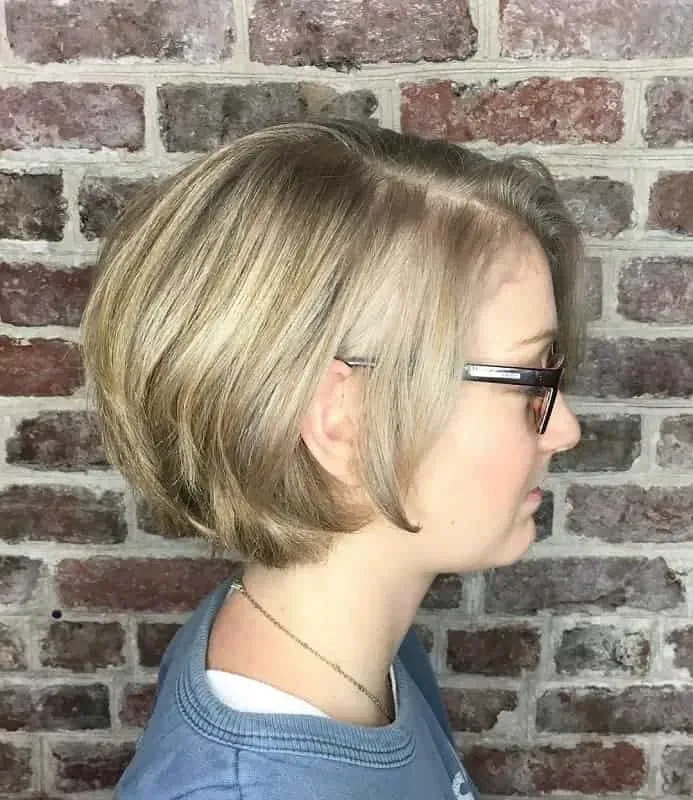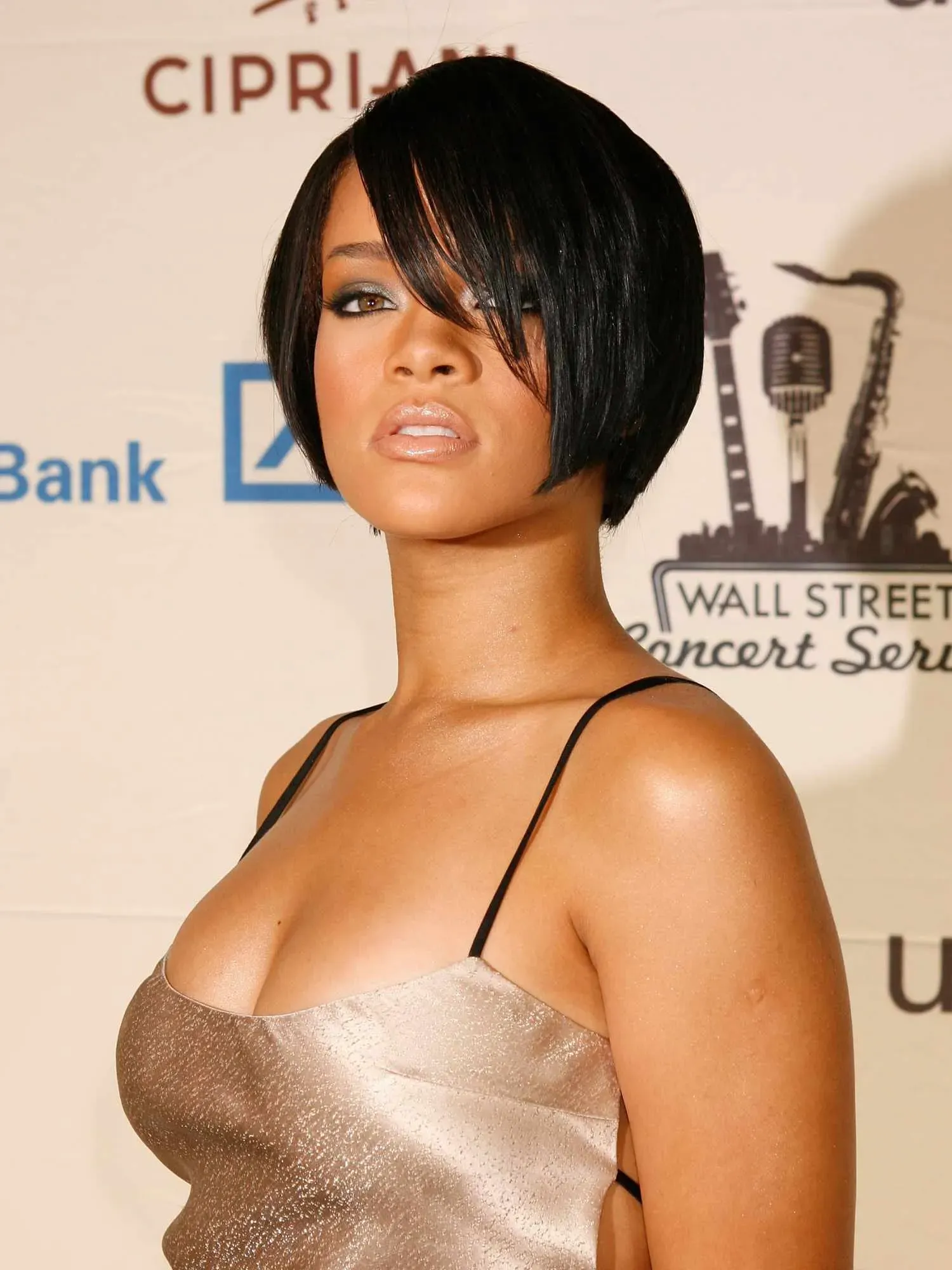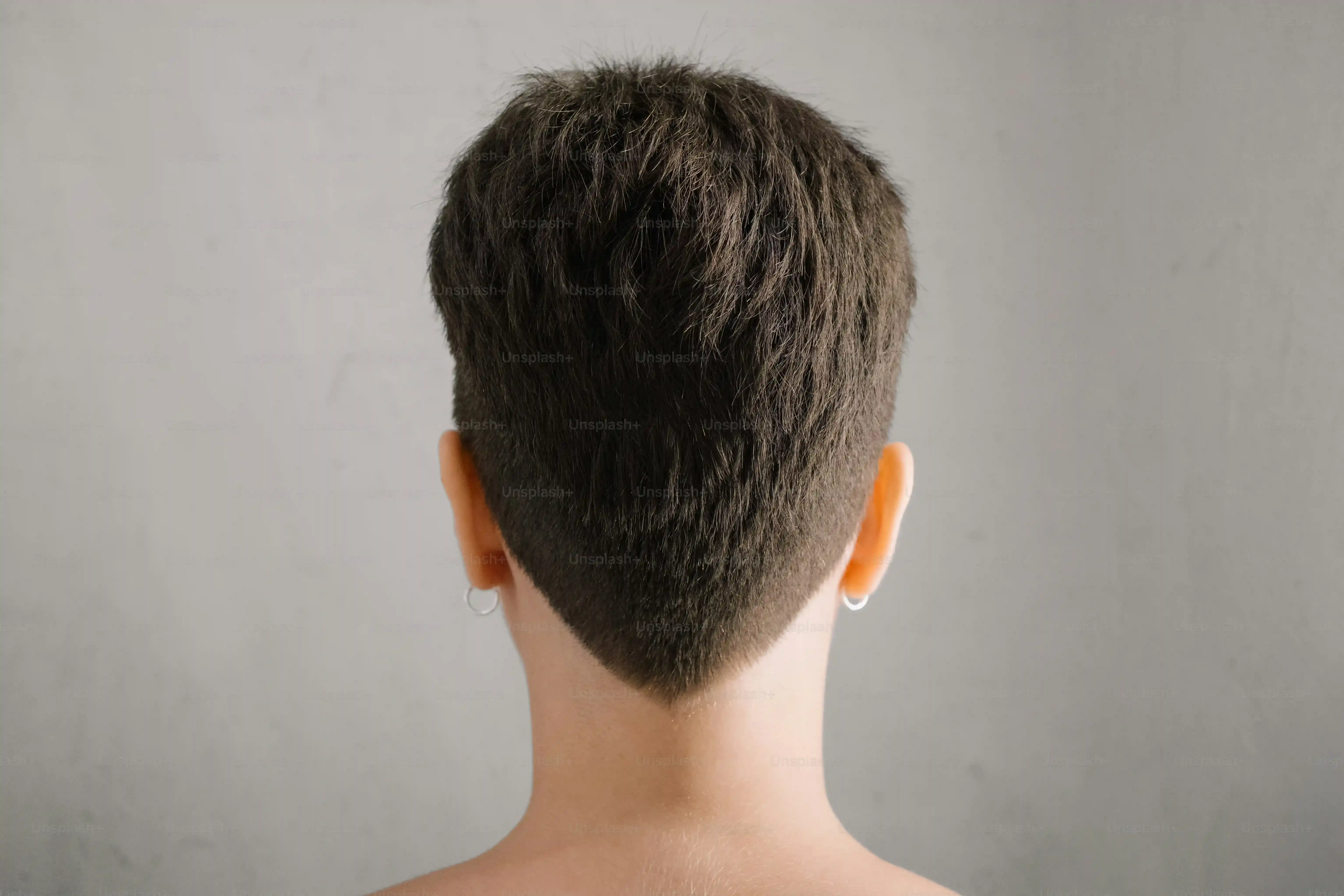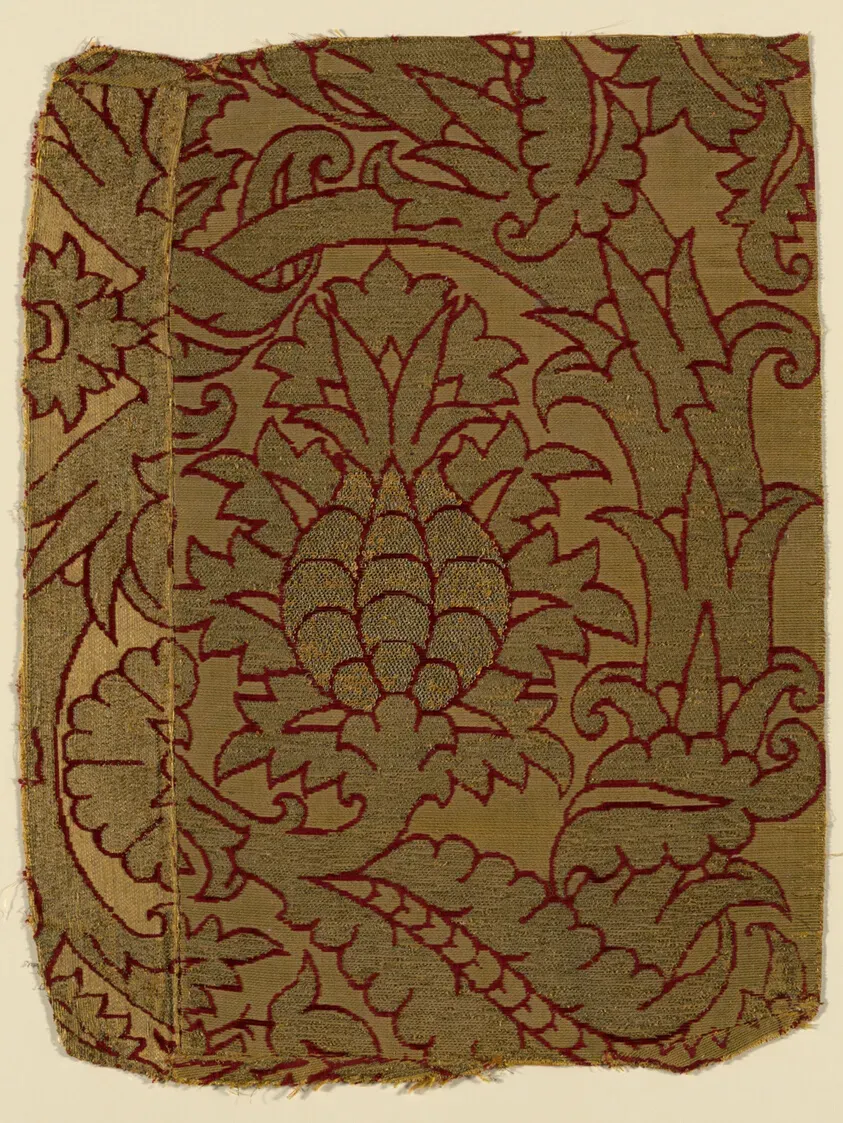Table of Contents
Let's be honest, fine, thin hair can feel like a constant battle against gravity. You wash it, you style it, you pile on the volume products, and within an hour, it's often back to its naturally flat state. It's enough to make you want to just tie it back and give up. But before you surrender, consider this: maybe the issue isn't the products, but the cut. Specifically, the power packed into short bob cuts for fine thin hair. This isn't just some random haircut; it's a strategic choice that can fundamentally change how your hair looks and feels. A well-done bob can make fine strands appear thicker, add structure where there was none, and create movement you only dreamed of. We're not talking about helmet hair here. We're talking sharp lines, clever layers, and techniques that make the most of what you've got. This article is your no-nonsense guide to navigating the world of short bobs when your hair needs a little help in the volume department. We'll walk you through choosing the right style, show you simple styling tricks that actually work, and cover how to keep your bob looking its best. Ready to see what a difference a few inches can make? Let's get started.
Why Short Bob Cuts Are Your Secret Weapon for Fine Thin Hair

Why Short Bob Cuts Are Your Secret Weapon for Fine Thin Hair
The Structure Advantage
let's cut to the chase. If you have fine, thin hair, length is often your enemy. The longer it gets, the heavier it is, and the flatter it lies against your head. It's a simple matter of physics, really. But short bob cuts for fine thin hair flip the script. By chopping off those languishing ends, you instantly remove weight. This allows the hair strand itself to have more inherent body and bounce. Think of it like a limp string versus a taut one. A shorter strand stands up better. Plus, a skilled stylist can use the structure of the bob – the blunt perimeter, the potential for subtle internal layers – to build a shape that visually supports the hair, making it look denser and fuller than it actually is. It’s not magic, just geometry applied to hair.
Creating the Illusion of Fullness
Beyond just removing weight, short bob cuts for fine thin hair are masters of illusion. A blunt cut, for instance, makes the ends look thicker because all the hair finishes at the same point. No wispy, see-through tips here. Adding strategic layers, often called "graduated" or "stacked" layers in the back, pushes the hair up and creates a rounded shape that screams volume, even if the individual strands are fine. It’s like building a scaffold for your hair. This isn't about having *more* hair, it's about making the hair you *do* have look like a lot more. It’s the visual trickery that makes a short bob such a powerhouse for combating flatness.
- Removes weight that pulls hair down.
- Creates a strong, blunt perimeter for a thicker look.
- Allows for strategic layering to build volume.
- Offers a solid structure for styling products to work with.
- Minimizes breakage often seen on longer, fine ends.
Picking Your Perfect Short Bob Style for Fine Thin Hair

Picking Your Perfect Short Bob Style for Fine Thin Hair
Consider Your Face Shape and Lifestyle
Alright, so you're sold on the idea that short bob cuts for fine thin hair are the way to go. Great! But before you charge into the salon demanding "a bob," let's pump the brakes for a second. Not all bobs are created equal, especially when you're working with less density. The best short bob for *your* fine, thin hair depends heavily on two things: your face shape and your lifestyle. A super blunt, chin-length bob might look amazing on someone with an oval face, but could emphasize roundness on another. Likewise, if you’re someone who rolls out of bed and needs to be out the door in ten minutes, a heavily layered, piecey bob might be more maintenance than you bargained for. Think about how much time you're willing to spend styling and what features you want to highlight or soften. Be honest with yourself – that Pinterest picture might be gorgeous, but is it practical for *your* life?
Blunt, Layered, or Graduated?
Now for the fun part: the specifics. For fine hair, a blunt cut is often gold. Cutting straight across creates the illusion of density at the bottom, making those ends look much thicker than they are. Think of it as gathering all your resources into one strong line. If you want a bit more movement or a softer look, subtle layering can work, but the key word here is *subtle*. Too many layers, or layers that are too short, can make fine hair look even thinner and wispier. A graduated or stacked bob, where the back is slightly shorter and layered to create a rounded shape, is a classic for a reason – it builds major volume in the crown, a common flat zone for fine hair. Talk to your stylist about these options; they can assess your hair texture and growth patterns to recommend the best approach.
What's the biggest mistake people with fine hair make when choosing a bob?
Adding Bangs and Texture
Don't forget the finishing touches that can elevate your short bob. Bangs can be a game-changer for fine hair. A wispy fringe can add softness and frame the face, while side-swept bangs can create the illusion of more hair around the face and blend seamlessly into the bob. Avoid heavy, blunt bangs unless your stylist specifically advises it, as they can sometimes look too sparse if the hair is very fine. Texture is another ally. Even a straight, fine bob can benefit from a little tousling spray or dry shampoo to add grip and volume. Your stylist can also use cutting techniques like point cutting or slicing to remove minimal weight while adding movement and texture, making your short bob cuts for fine thin hair look effortlessly chic.
Styling Tricks to Add Volume to Your Short Bob for Fine Hair

Styling Tricks to Add Volume to Your Short Bob for Fine Hair
Alright, you've got the cut, maybe it's a blunt bob, maybe it's got some subtle graduation in the back, but now the real work (or fun, depending on your perspective) begins: styling it to look like you have twice as much hair as you actually do. This is where the magic happens with short bob cuts for fine thin hair. Forget heavy mousses that weigh everything down. You need products and techniques that lift and hold without feeling crunchy or sticky. Think lightweight root lifters sprayed directly onto the scalp before drying, or texturizing sprays applied mid-length to ends for grit and pieceiness. Blow drying is your best friend here; using a round brush to lift the roots and bevel the ends can make a huge difference. And don't underestimate the power of simply flipping your part to the other side – it instantly lifts the hair at the crown where it usually falls flat. It's about working smarter, not harder, with the hair you've got.
What's the one styling product you absolutely need for adding volume to fine hair?
Maintaining Your Short Bob Cut for Fine Thin Hair

Maintaining Your Short Bob Cut for Fine Thin Hair
Keeping Your Bob Sharp and Voluminous
So, you've got the perfect short bob cut for fine thin hair, you've mastered the styling tricks, and for the first time in ages, your hair has actual lift and body. Success! But a bob, especially a sharp one designed to maximize volume on fine hair, isn't a "set it and forget it" kind of deal. The structure that gives you that enviable fullness relies on precise lines and often, subtle layering. As your hair grows, those lines soften, the layers lose their strategic placement, and gravity starts to win again. This means regular trims are non-negotiable. We're talking every 4-6 weeks, depending on how fast your hair grows. Skipping trims is the quickest way to undo all the good work your stylist did and watch your bob morph back into a shapeless, flat mess. Think of it as scheduled maintenance for your volume.
Common Questions About Short Bob Cuts for Fine Thin Hair

Common Questions About Short Bob Cuts for Fine Thin Hair
Will Cutting My Fine Hair Short Make It Look Thinner?
This is perhaps the biggest fear people with fine hair have when contemplating short bob cuts for fine thin hair. The thought is, "If I don't have much hair to begin with, won't cutting it shorter just leave me with less?" It seems logical on the surface, but it's often the opposite of what happens. As we discussed, length weighs fine hair down, making it lie flat and revealing the scalp more easily. Removing that weight allows the hair strands to lift at the root and creates a stronger, denser perimeter line. Think of a handful of spaghetti strands. If they're long, they just hang limp. If you cut them shorter and stand them up, they occupy more space and look like a more substantial bundle. A well-executed short bob does just that for fine hair – it takes what you have and makes it look like more by giving it structure and removing the enemy: weight.
Is a Short Bob for Fine Hair High Maintenance?
The answer to this is a classic "it depends." A super sharp, blunt bob on very straight, fine hair might require minimal effort – maybe just a quick blow-dry and a bit of smoothing serum. However, if you opt for a more layered or textured short bob cut for fine thin hair, you might need to invest a little more time with a round brush, texturizing spray, or even a curling iron to enhance the shape and volume. It's not necessarily *hard* to style, but it often requires *some* styling to look its best, unlike long hair which you might just throw in a ponytail. The trade-off is that the styling you *do* do actually makes a visible difference in fullness and shape, which isn't always the case with longer, fine hair. So, while it might require a few minutes each morning, those minutes yield actual results.
Often, the key to easy styling lies in the initial cut. Tell your stylist your realistic morning routine.
- Blunt Bob: Can be low maintenance if worn straight.
- Layered Bob: Requires some effort to enhance texture and volume.
- Graduated Bob: Needs blow-drying to maintain the stacked shape.
- Air Drying: Possible with some cuts, but often reduces volume on fine hair.
Can I Still Put Up or Style a Short Bob?
Yes, absolutely, though perhaps not in the elaborate updos long hair allows. Short bob cuts for fine thin hair are surprisingly versatile. You can still pull the front sections back with pins for a half-up style, or gather the back into a tiny ponytail or bun, especially as it starts to grow out slightly. Headbands, scarves, and other hair accessories become your best friends, adding interest and keeping hair off your face. You can also easily change your look by altering your part, adding waves with a wand, or slicking it back for a more polished feel. While you might not be doing intricate braids, the ability to quickly change the look and feel of your bob with minimal effort is one of its underrated benefits.
Making the Cut: Final Thoughts on Your Short Bob
So, there you have it. Opting for short bob cuts for fine thin hair isn't a magic bullet, but it's arguably the most effective haircut strategy you can employ to give the illusion of more volume and substance. It requires a bit of thought in choosing the right variation and a willingness to learn a few simple styling techniques. It won't suddenly give you a lion's mane, but it will provide a framework that makes your fine hair work *for* you, rather than against you. It's a practical solution for a common hair complaint, offering structure, movement, and a generally sharper look than limp, longer styles. If you're tired of the flatness, a well-executed short bob might just be the answer you've been looking for.